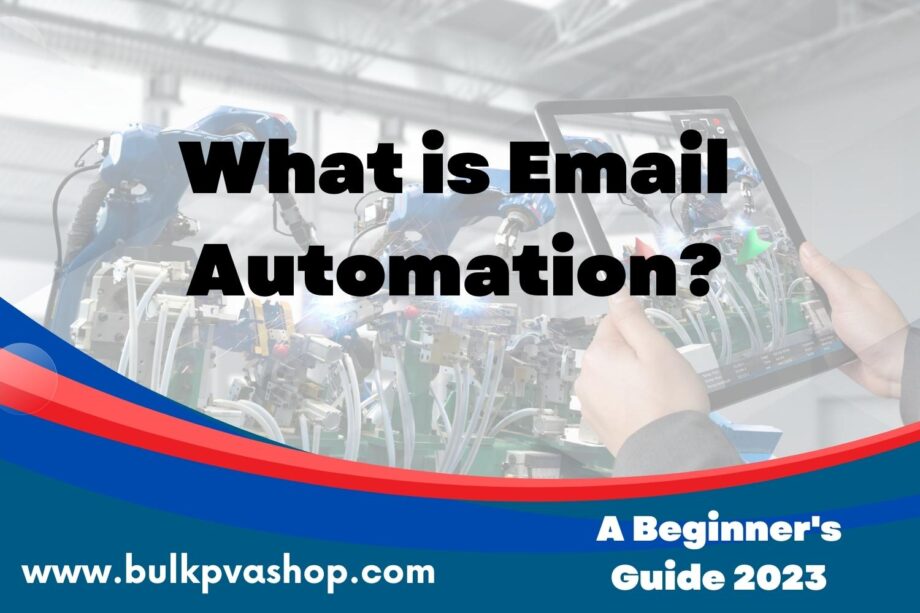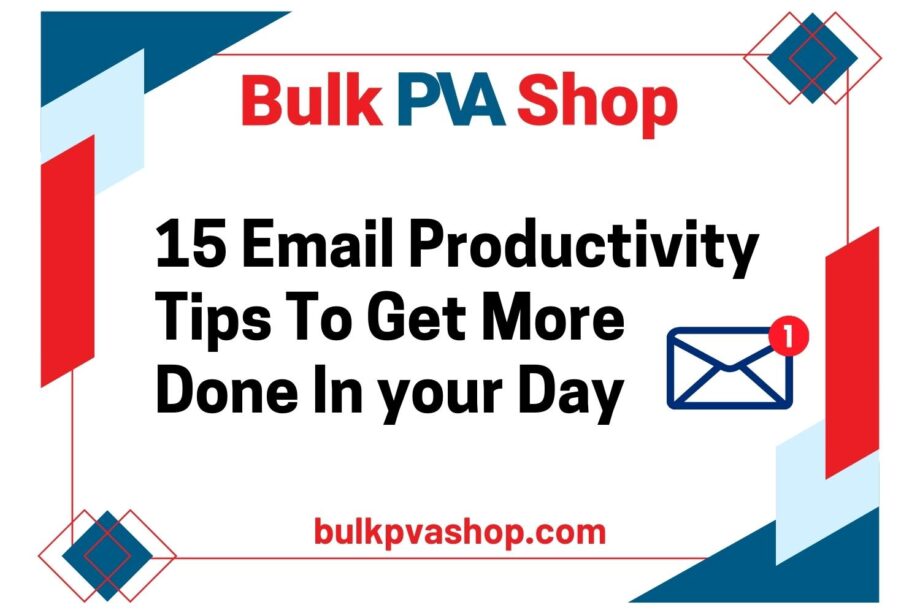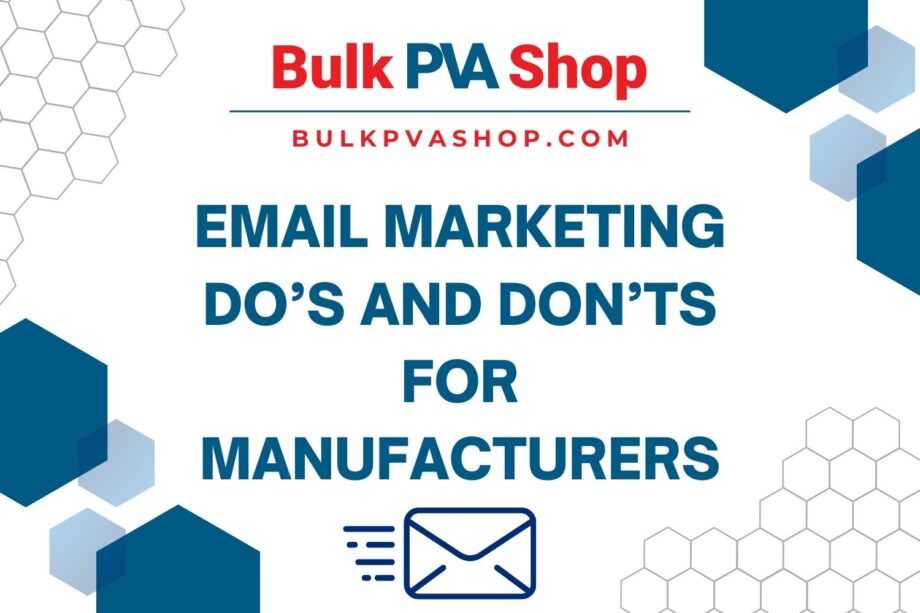Emails continue to be a key component of professional and personal communication in the fast-paced world of digital communication. However, manually monitoring emails can take a lot of time, particularly in a professional setting. In this situation, email automation can be a game-changer.
This article will walk you through the concept of email automation in 2023, helping you understand its importance and how to harness its power for your business.
What is email automation?
Email automation is a sophisticated marketing strategy. That makes use of specialized software to deliver customized emails to particular recipients’ lists at predetermined intervals or in reaction to certain triggers. The primary aim of this process is to nurture leads, engage customers, and streamline communication workflows.
How Email Automation Works
Email automation is a process that allows businesses and individuals to send emails to their contacts automatically, based on predefined triggers, actions, or schedules. This technology streamlines communication, saves time, and enables personalized messaging at scale. Here’s how email automation works:
- Subscriber List: The process typically starts with building a list of email subscribers or contacts. These are the individuals or groups you want to send emails to. People can join these lists through various methods, such as signing up on a website, making a purchase, or opting in to receive updates.
- Email Automation Software: You’ll need email automation software or an email marketing platform to manage your email automation campaigns. Popular options include MailChimp, HubSpot, or ActiveCampaign.
- Setting Triggers: Within the email automation software, you define triggers that initiate email sends. These triggers can be based on various actions or events, including > Welcome Emails: Sent automatically when someone joins your list.
> Abandoned Cart Emails: Sent when a user adds items to their cart but doesn’t complete the purchase.
> Birthday or anniversary emails: Sent on special occasions.
> Behavioral Triggers: such as clicking a specific link in a previous email. - Creating Email Templates: You design email templates that will be sent automatically when the trigger conditions are met. These templates can include text, images, links, and other elements. They can be plain text or highly designed HTML emails, depending on your preferences and audience.
- Segmentation: To make emails more personalized and relevant, you can segment your email list. This means dividing your subscribers into smaller groups based on criteria such as location, purchase history, or engagement level. Automation can then be applied to each segment separately.
Benefits of Email Automation
Time Efficiency
By automating your email marketing, you may free up critical time for more strategic tasks. It removes the need for manual email sending and tracking, allowing you to concentrate on more difficult duties.
Personalization
You may send messages that are incredibly targeted and customized thanks to email automation. You may customize your emails to particular groups or even individual receivers by segmenting your audience and employing dynamic content, which will increase engagement and conversion rates.
Improved Customer Experience
Automated emails can provide timely responses to customer inquiries, enhancing their overall experience. Whether it’s a welcome email, a thank-you message, or a follow-up after a purchase, automation ensures that customers receive the right message at the right time.
Increased Revenue
Studies repeatedly show that email marketing is still one of the best strategies for increasing revenue. You may nurture prospects and direct them through the sales funnel by utilizing email automation, which will ultimately result in more money for your company.
Different Types of Email Automation
Welcome Series
This type of automation involves sending a series of emails to new subscribers or customers to introduce them to your brand, products, or services.
Abandoned Cart Emails
When a user adds products to their cart but navigates away from the website without making a purchase, these emails are sent. They act as a subtly encouraging reminder to promote a conversion.
Lead Nurturing Drip Campaigns
Drip campaigns are a series of emails sent over a period of time with the goal of nurturing leads and guiding them toward a specific action, such as making a purchase.
Re-engagement Campaigns
To pique their interest and entice them back into your sales funnel, these emails are sent to dormant subscribers.
How to Set Up Email Automation
Choose an Email Marketing Platform
Choose a platform for email marketing that has sophisticated automation tools. Popular choices include ActiveCampaign, HubSpot, and Mailchimp.
Define Your Goals and Audience
Before diving in, clearly define your goals and understand your target audience. This will serve as a foundation for creating relevant content and selecting appropriate triggers.
Create Compelling Content
Create informative and worthwhile material that appeals to your readers. This might consist of thank-you emails, product recommendations, instructional material, and more.
Set Up Triggers and Automation Rules
Establish the triggers for your automated emails. These could be events like registrations, purchases, abandoned shopping carts, or particular dates.
Test and Optimize
Keep a close eye on the effectiveness of your email automation initiatives. To improve for better outcomes, test out various components such as subject lines, content, and sending timings.
How to choose the right Email Marketing Automation Tools
Choosing the right email marketing automation tool is crucial for the success of your email campaigns. Here are steps to help you select the best one for your needs:
Define your needs and Goals:
What you hope to accomplish with your email marketing activities should be made very clear. Are you concentrating on generating leads, nurturing them, e-commerce, promoting events, or something else?
Budget Consideration:
The amount of money you’re willing to spend on an email marketing automation platform should be determined. Find a tool that matches your budget while still offering the functionality you require, because prices might vary greatly.
Ease of Use:
Choose a platform with an intuitive interface and user-friendly features. This ensures that you and your team can navigate the tool efficiently.
Integration Capabilities:
Verify that the solution effortlessly connects with your current systems (such as your CRM, e-commerce platform, and CMS). Your process will be streamlined as a result, and a more thorough view of customer contacts will be possible.
Email Deliverability:
Ensure that the tool has a good track record of delivering emails to the inbox rather than being marked as spam. High deliverability rates are essential for successful email marketing.
Automation Features:
A product with strong automation capabilities, such as drip campaigns, behavior-triggered emails, segmentation, and personalization, is what you should be looking for.
Segmentation and Personalization:
Effective segmentation and personalization options allow you to send targeted and relevant content, which can significantly improve engagement and conversions.
Reporting and Analytics:
You can monitor the effectiveness of your efforts with the help of comprehensive reporting options. Insights on open rates, click-through rates, conversion rates, and other metrics should be available from tools.
Template Design and Customization:
Ensure the tool provides a range of customizable templates or allows you to create your own. The ability to design attractive emails is crucial for engagement.
Support and training:
Consider the level of support and training resources offered by the tool’s provider. This can be essential for troubleshooting issues and getting the most out of the platform.
Making Email Automation Work for You
To ensure the success of your email automation efforts, it’s crucial to maintain a balance between automation and personalization. While automation streamlines your communication process, it’s essential to continue offering valuable and relevant content to your audience.
Don’t forget to keep an eye on important performance indicators like open rates, click-through rates, and conversion rates. Utilize this information to improve your efforts and keep providing your subscribers with high-quality material.
conclusion
Email automation is a powerful tool that can revolutionize your communication efforts. By leveraging automation software, you can save time, enhance personalization, and improve customer experiences.
Whether you’re a small business owner or a marketing professional, Email automation is a strategy that should be in your toolkit. Start exploring the possibilities and watch your email campaigns soar to new heights.




